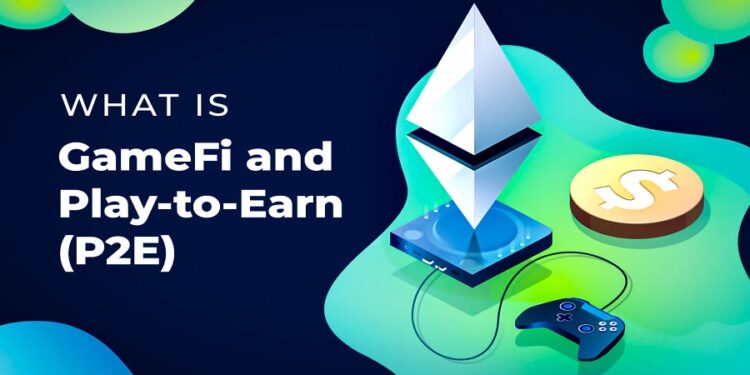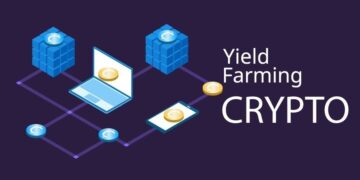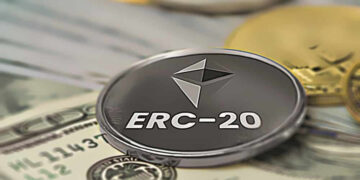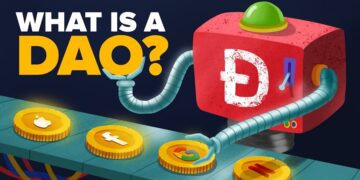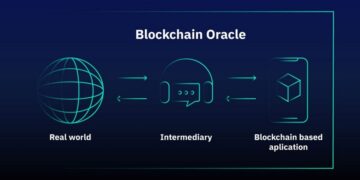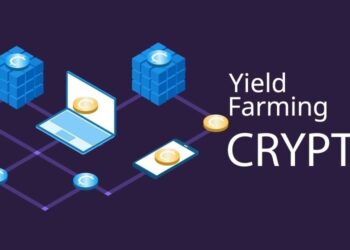Play to Earn has emerged as a popular trend in mid-2021, leading to a notable increase in the activity of the cryptocurrency market with the introduction of numerous gaming projects. What are the factors that contribute to the allure of this model? This article aims to explore the topic in depth.
Table of Contents
ToggleWhat is Play to Earn?
The game mechanic known as Play-to-earn (P2E) utilizes blockchain technology to allow players to receive crypto tokens as rewards for fulfilling various objectives, including completing tasks, achieving victories against other players, or advancing through the game’s levels. This system is gaining traction as an innovative way for gamers to profit from their skills and achievements within virtual worlds.
Various types of rewards are available for participants, including native cryptocurrencies such as MANA from Decentraland, NFT assets consisting of skins, cards, characters, and others, as well as well-known cryptocurrencies like ETH or USDT.
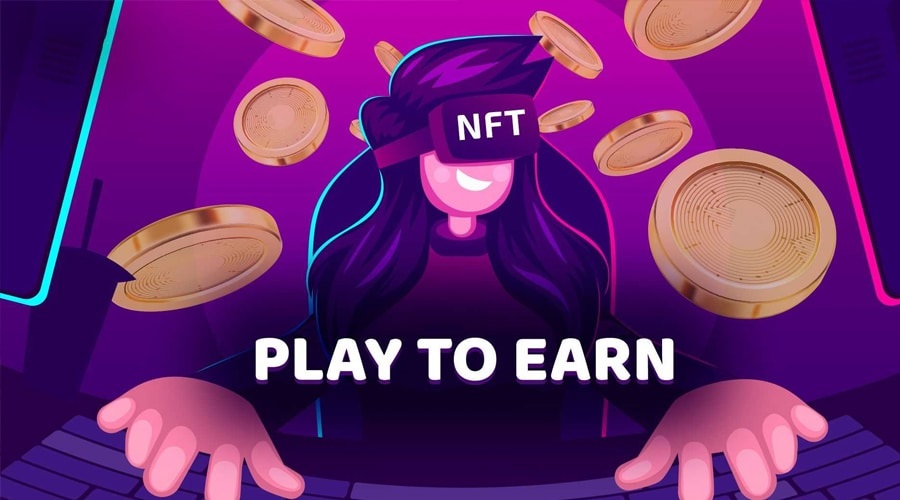
The fundamental mechanism underlying P2E games is uncomplicated: as users invest more time in the game, their likelihood of earning rewards with genuine worth, primarily in the form of cryptocurrencies, increases.
One example of a Play-to-Earn (P2E) game is Decentraland, which offers the opportunity for players to rent out virtual land and generate a passive income. Additionally, various P2E games feature battle gameplay where players can earn tokens. For instance, Axie Infinity has a native cryptocurrency system where players can earn points with real-world value through AXS and SLP currencies.
For the purpose of providing an expansive comprehension of the ecosystem and prominent undertakings in blockchain gaming, an enumeration of the preeminent NFT games has been compiled.
Traditional vs Play-to-Earn Games
Olga Vorobyeva, a seasoned consultant for numerous blockchain-oriented businesses, articulated that conventional gaming can be defined as a “closed-end model,” in which players must pay for admission and then dedicate significant periods of time engaging in monotonous activities within the game in order to progress or procure rewards. Ultimately, gamers do not possess the authority to transfer or trade these items, and they are subordinated to the gaming companies, who wield the implicit ability to interrupt or alter the game world at their discretion, as was witnessed in the instance of Vitalik Buterin.
According to Vorobyeva’s statement to Built In, play-to-earn games allow players to receive value by earning rewards through the acquisition of various in-game assets such as crypto tokens, virtual land, avatars, weapons, and non-fungible tokens (NFTs) as they complete tasks, battle other players, and progress through different levels. Moreover, unlike conventional games, the decentralized structure of these games enables players to purchase and transfer these in-game assets outside of the game’s virtual realm.
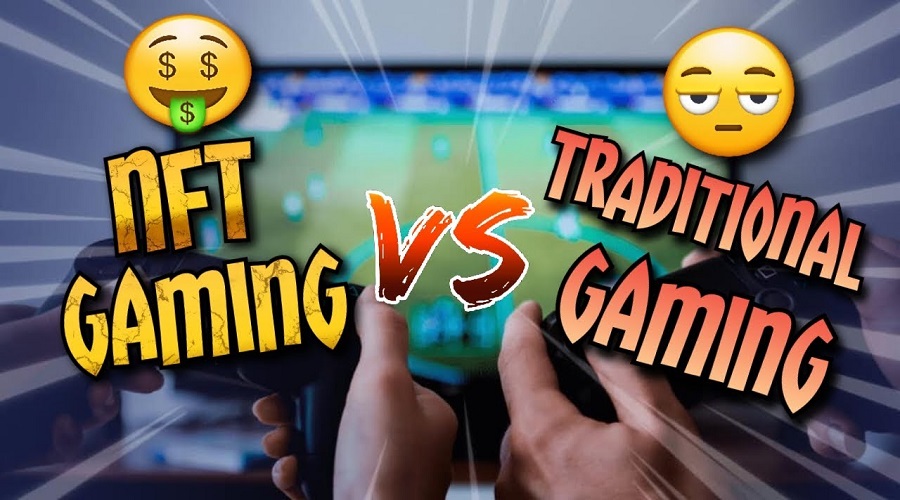
In a statement to Built In, Vorobyeva expressed that any industry that adopts blockchain technology is imbued with decentralized and autonomous governance, as evidenced by its significant impact on sectors such as music and art. She further suggests that gaming is next on the list of industries that stand to benefit from blockchain’s transformative capabilities.
It would be prudent for one to become familiar with games that offer play-to-earn incentives
- CryptoKitties: CryptoKitties, a blockchain game that enables players to acquire, amass, breed, and trade virtual cats, was created by Dapper Labs, a Canadian studio. The game operates on the Ethereum blockchain and is regarded as one of the earliest initiatives to integrate decentralized finance into gaming.
- Axie Infinity: Axie Infinity is currently one of the most prominent play-to-earn games in the gaming industry. It involves collecting adorable creatures referred to as “axies” that can be bred with other axies or pitted against one another in battles to acquire cryptocurrency tokens known as “smooth love potions,” commonly referred to as SLP.
- Decentraland: In this three-dimensional virtual realm, participants have the opportunity to acquire digital territory, construct upon it, and subsequently lease or trade it with fellow players using MANA, an Ethereum blockchain-based cryptocurrency. During its height of prominence, individual plots of land were being purchased for values exceeding $100,000.
- DeFi Kingdoms: DeFi Kingdoms is a multifaceted platform set in Gaia, a fictitious medieval world, where players are required to engage in farming NFTs and Jewel -its cryptocurrency. Essentially, it functions as a comprehensive gaming experience, a decentralized exchange, and a liquidity pool simultaneously. Many credit this platform with the rapid growth of GameFi.
- STEPN: STEPN is marketed as a “move-to-earn” application that aims to incentivize physical activity by offering monetary rewards. To join, users are required to purchase a non-fungible token (NFT) that represents a pair of virtual sneakers. STEPN’s app records the distance covered during an individual’s actual walks, jogs, or runs and subsequently compensates them with tokens that can be used to purchase in-game enhancements or can be exchanged for cash.
Despite not having formal training as a game designer, Vorobyeva has extensive experience in gaming and demonstrated her expertise by managing a private World of Warcraft server for a decade, attracting a substantial player community of around 300,000. With an educational background in finance and economics, she joined the crypto industry in 2016 and initially felt apprehensive about the timing of her entry, believing that she might have been too tardy to the game. However, little did she know at the time that the industry was still in its embryonic stage and had yet to reach its full potential.
According to game designer Tracy Spaight, GameFi currently represents one of the most rapidly expanding sectors in the video game industry. Having spent over two decades working in the field. Spaight presently serves as the head of gamification at Synesis One – a pioneering decentralized autonomous organization that facilitates data yield farming activities. Despite acknowledging the prevailing influence of “institutional conservatism” amongst veteran game industry professionals. Spaight expresses enthusiasm for the “novel form of ownership” that play-to-earn gaming models have made possible.
Play-to-earn games are self-contained virtual economies that operate through the use of crypto tokens, which are built on specific blockchain platforms such as Solana, Ethereum, or Polygon’s layer 2 chain, among others. The tokenomics of each game vary in terms of supply and demand of their respective currencies. Although each game’s model and economy differ, all in-game assets have the potential to grant monetary benefits to its players, such as earning cryptocurrency by winning battles, selling in-game NFTs on a marketplace, or charging virtual land rent to fellow players.
Spaight, in a statement to Built In, expressed his intrigue at observing the gradual progression of expansive virtual spaces which give rise to intricate economic structures and fascinating collective conduct among individuals online. He added that this evolution has been a lengthy and intriguing process.
How to earn money with play game crypto?
P2E crypto games present players with the possibility of earning money due to the fact that the assets they acquire through gameplay possess genuine market value and can be subsequently sold.
Earning In-Game Digital Currency or Tokens
Many players are discovering a lucrative opportunity to earn money with Play-to-Earn (P2E) games, which involves obtaining cryptocurrencies through gameplay. These types of games typically feature an internal currency or token that players can acquire by performing certain in-game activities. Subsequently, players can sell these tokens on cryptocurrency exchanges at market rates, effectively converting them into real-world money. This method presents players with a viable source of income, while also introducing them to the crypto market and its potential for growth.
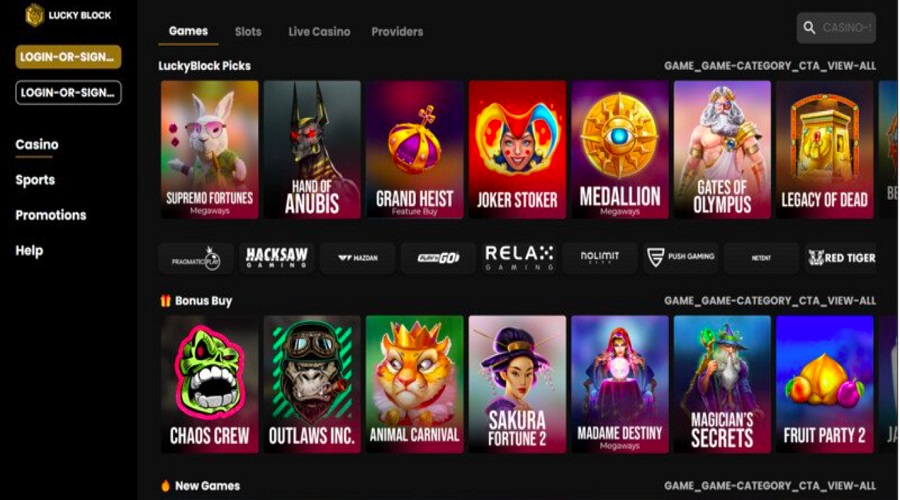
The following examples represent a selection of P2E games along with their corresponding native tokens, which are in-game cryptocurrencies:
- Decentraland ($MANA)
- The Sandbox ($SAND)
- Aavegotchi ($GHST)
- Axie infinity ($AXS)
Collecting In-Game NFTs
By gathering non-fungible tokens (NFTs) from play-to-earn (P2E) games, players have the opportunity to generate income by vending them on digital markets for actual currency.
A number of P2E crypto games incorporate integrated marketplaces, which facilitate the purchase and sale of gamers’ in-game assets.
Professionally Trading Assets
The capacity to exchange gaming NFTs further offers a lucrative avenue for expert arbitrageurs and daily traders to generate income from P2E crypto games, as they can acquire in-game resources and subsequently resell them at a higher value on an alternative platform.
What is Yield Farming? Gain a comprehensive understanding of the terminology associated with Yield Farming
The concept of Yield Farming, prominent Yield Farming platforms, and the associated risks and opportunities are explored in this article,...
Read moreWhat is Initial DEX Offering (IDO crypto)? Does playing IDO really give you a 100% chance of winning?
One may inquire as to why the Initial DEX Offering (IDO) has gained widespread popularity and whether investing in IDO...
Read moreWhat is ERC – 20? Advantages, disadvantages & how to create ERC- 20 network tokens
In this article, we will explore ERC-20 and ERC-20 tokens along with their applications and advantages and disadvantages. For those...
Read moreWhat is Airdrop Crypto? Instructions for making airdrop coins in the Crypto market
What is Airdrop and how many forms of Airdrop Crypto exist? Discover the limitations and effective instructions on how to...
Read moreWhat is DAO? Limitations and Investment Potential of DAO in Crypto
Understanding the terminologies used in the field of cryptocurrency is crucial for individuals involved in Crypto market participation or intending...
Read moreWhat is zkEVM? Classification of groups zkEVM
ZkEVM is an abbreviation for the term "Zero-Knowledge Ethereum Virtual Machine". It is a protocol that enables the execution of...
Read moreWhat is web3 technology? How to invest in Web3 in 2023
The emergence of Web 3.0 following Web 2.0 has brought about increased flexibility and superior interaction capabilities compared to its...
Read moreWhat is move to earn? best move to earn crypto in 2023
In the current GameFi market, it is possible to combine the seemingly unrelated tasks of earning money and improving one's...
Read moreWhat does NFT crypto stand for: Clarifying the Significance of Non-Fungible Tokens (NFTs) through technical examination
Non-fungible token (NFT) art are digital assets stored on a blockchain that depict physical or non-physical items, such as digital...
Read moreWhat are play to earn (P2E) Games? How to earn money with play game crypto?
Play to Earn has emerged as a popular trend in mid-2021, leading to a notable increase in the activity of...
Read moreWhat is an oracle in blockchain? Top blockchain oracle projects 2023
The intended function of blockchain technology was never to operate in isolation from the larger economic ecosystem. Despite the challenges...
Read moreBinance account sign up: What is binance account? how to create binance account?
Numerous cryptocurrencies are supported by Binance and its proficiency in ensuring swift exchange operations between volatile coins and fiat currencies...
Read moreWhat is a defining feature of the Metaverse Crypto? What does the term Metaverse refer to?
We have heard numerous prominent figures, such as Mark Zuckerberg, CEO of Facebook, and Satya Nadella, CEO of Microsoft, expound...
Read moreWhat are AI Tokens? Best AI Coins & Tokens to Invest in
The predicted impact of artificial intelligence (AI) is expected to revolutionize various sectors, including the field of cryptocurrency. The AI...
Read moreWhat are Fan Tokens? How Binance Fan Tokens are Revolutionizing the World of Sports and Entertainment?
The Fan Token is a term that has been shared by the CEO of the cryptocurrency exchange CZ on Twitter,...
Read more

